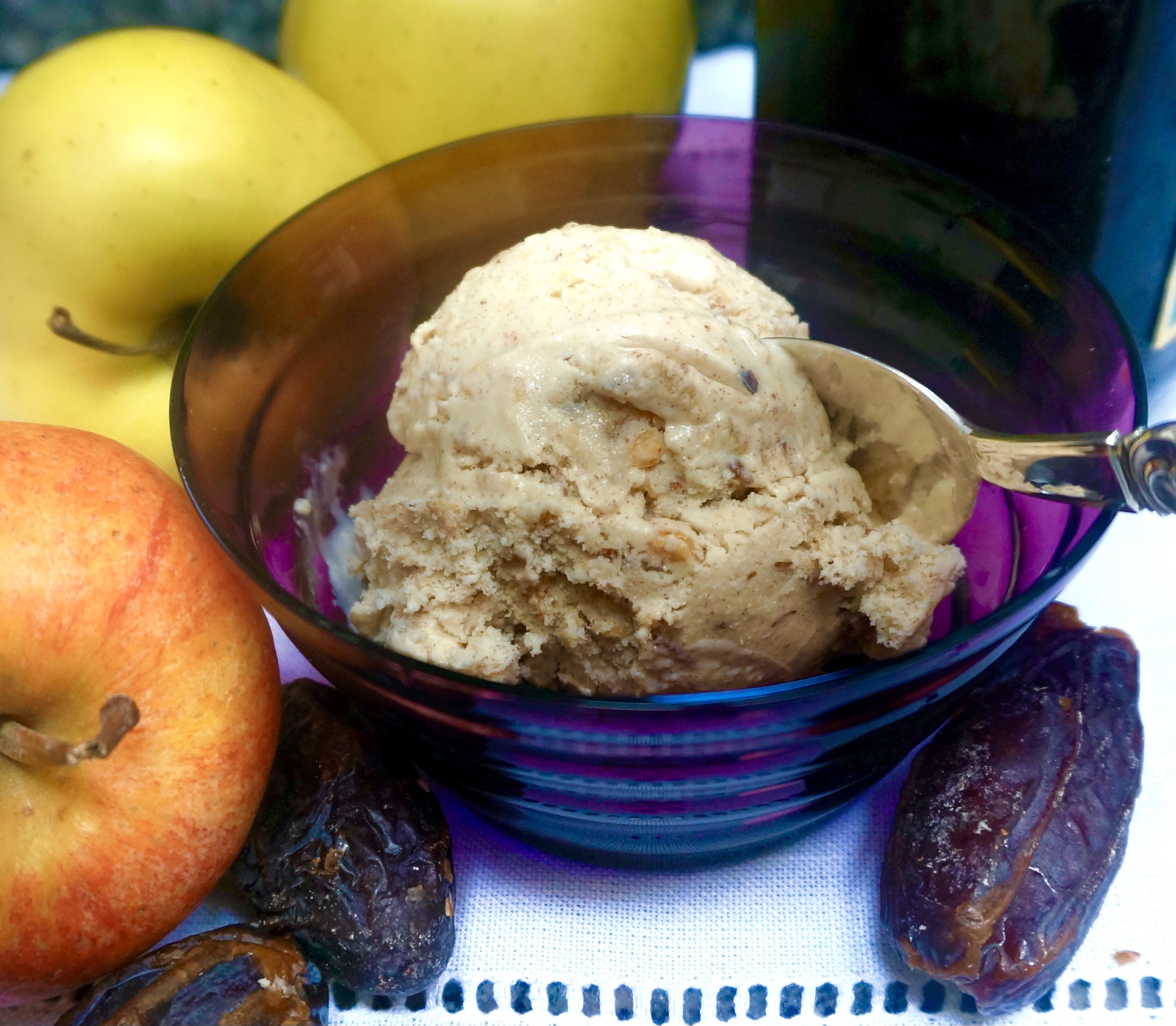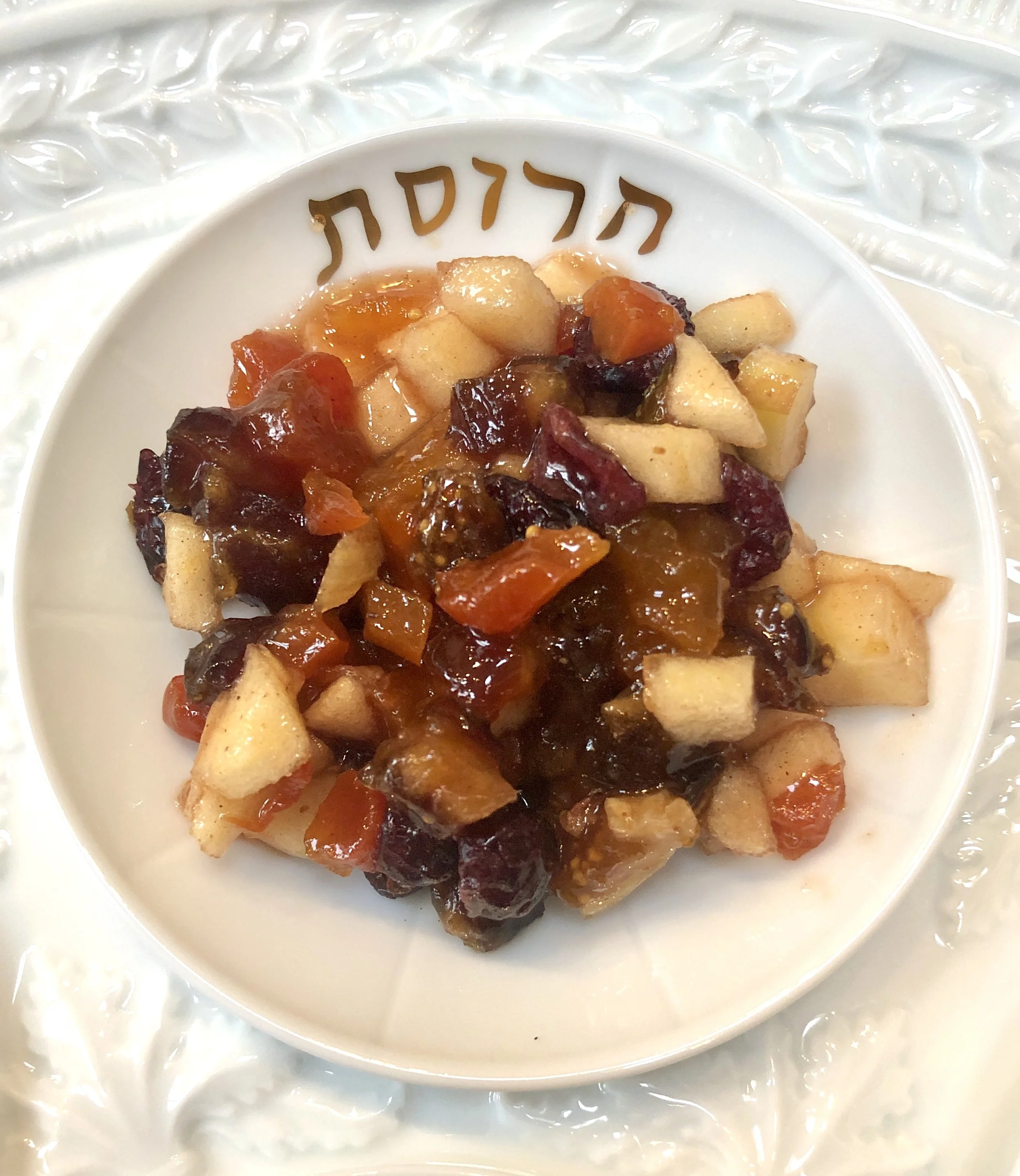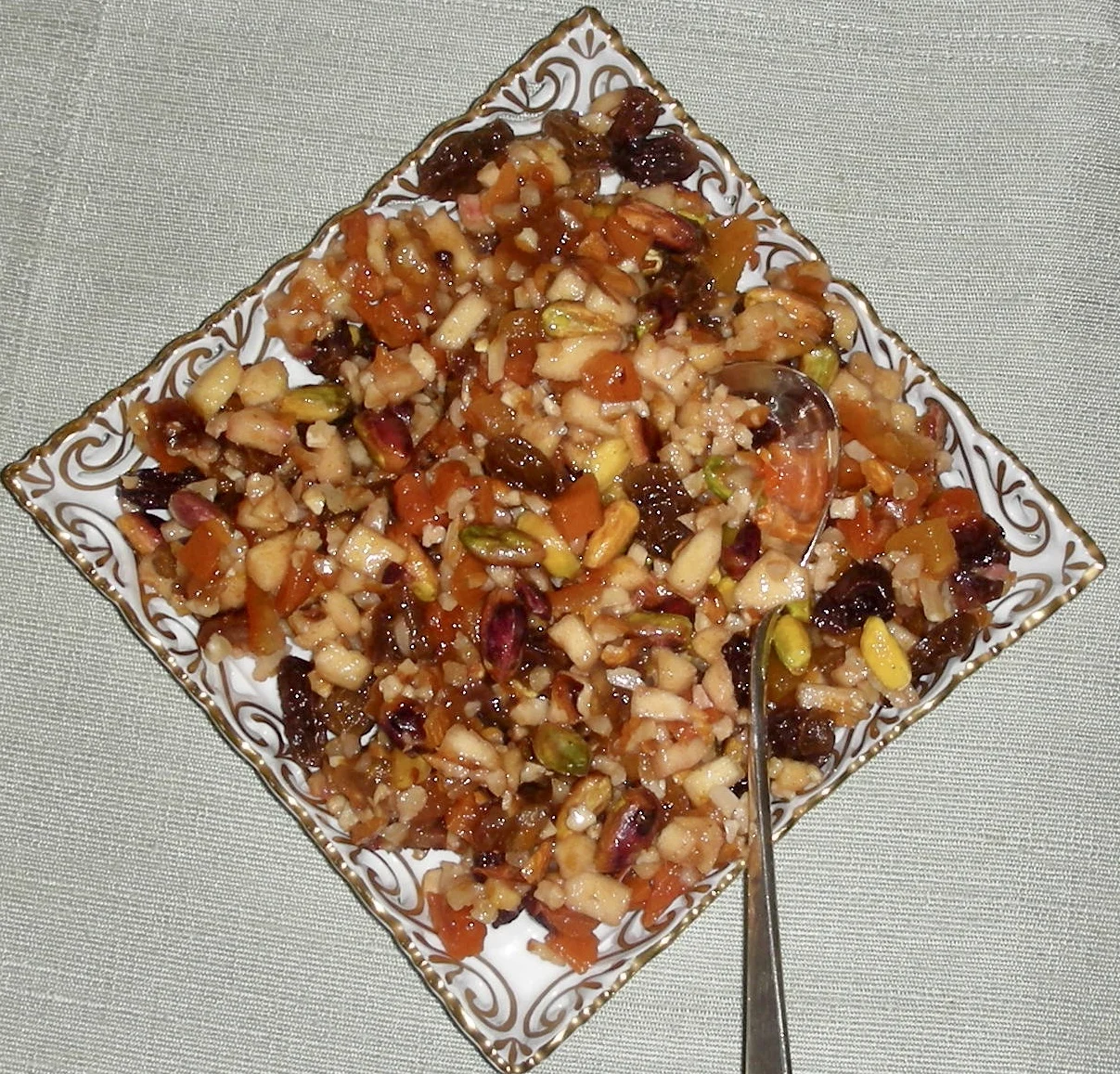Several years ago I created this recipe for charoset ice cream for an article in the Jewish Week Food & Wine (which, I am sad to say, no longer has a regular food/recipe column).
Back then (2015), Ben & Jerry’s had created a charoset flavored ice cream that was all the rage — but it was only available in Israel.
The mere mention of charoset ice cream piqued my interest. So I got to work and created my own version.
I have never tasted theirs. Don’t need to. This version is quite wonderfully delicious.
Charoset Ice Cream
1 tablespoon butter
3 tablespoons brown sugar
6 dates, preferably medjool, pitted and chopped
2 small Golden Delicious or other sweet apples, peeled and chopped
1/4 teaspoon cinnamon
1/4 cup sweet Passover wine
3 cups half and half, light cream or whipping cream
1/2 cup sugar
3 large egg yolks
1/8 teaspoon salt
1/3 cup chopped nuts, optional
Heat the butter in a saucepan over medium heat. When the butter has melted and looks foamy, add the brown sugar and mix it in. Add the dates and apples and stir the ingredients to distribute them evenly. Sprinkle in the cinnamon. Pour in the wine. Bring the liquid to a boil. Cover the pan, lower the heat and cook for 25-30 minutes or until the fruit is soft. Mash the fruit to make the mixture pasty and set it aside.
While the fruit is cooking, heat 2 cups of the cream over medium heat until bubbles appear around the edges of the pan. In the bowl of an electric mixer, beat the sugar, the egg yolks and salt at medium speed for 3-5 minutes or until light and thick. Gradually add the heated cream and mix the ingredients completely. Return the mixture to the saucepan and cook over medium heat, stirring constantly, for 5-6 minutes or until thickened enough to coat the back of a spoon. Pour in the remaining cream and blend it in thoroughly. Stir in the fruit mixture. Refrigerate until cold (at least 45 minutes). Freeze in an ice cream freezer according to manufacturer’
Makes about 6 cups




